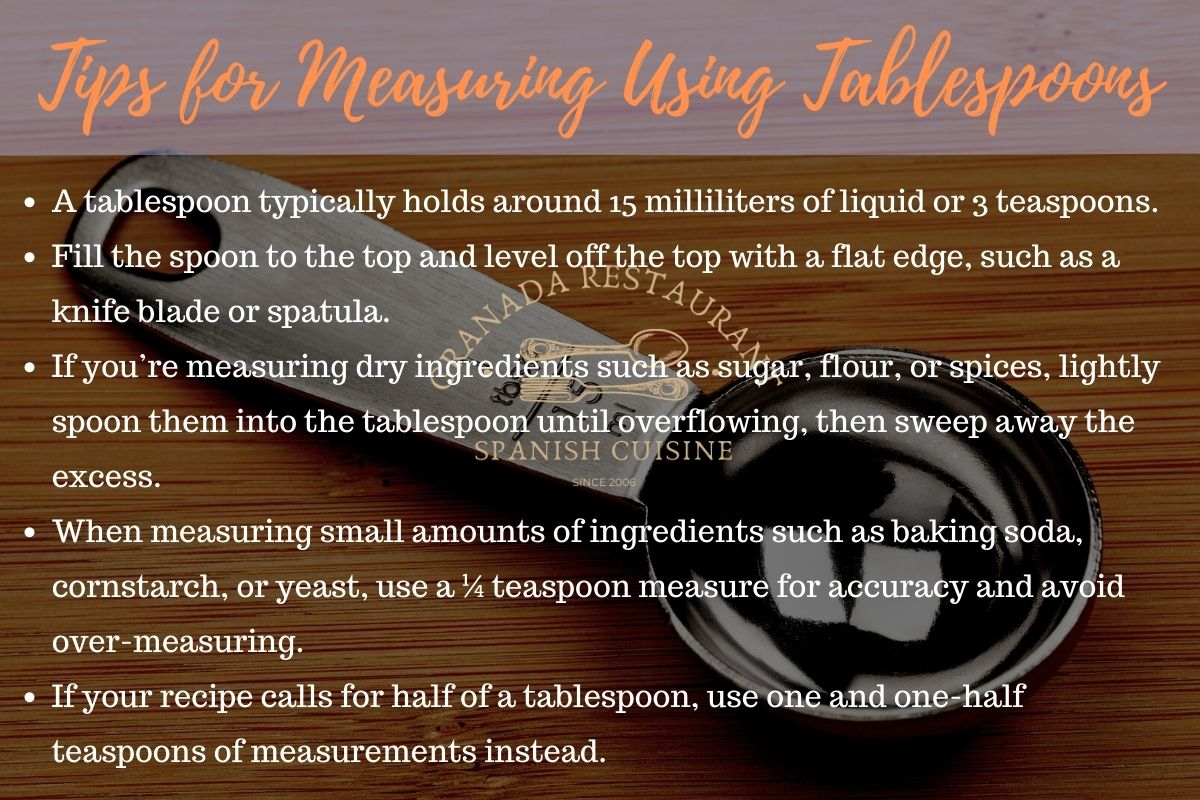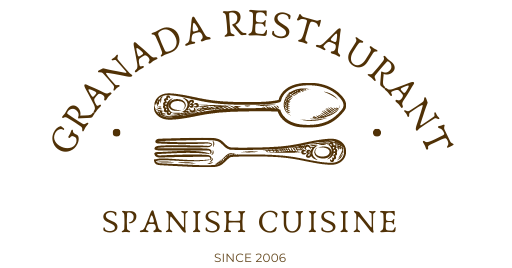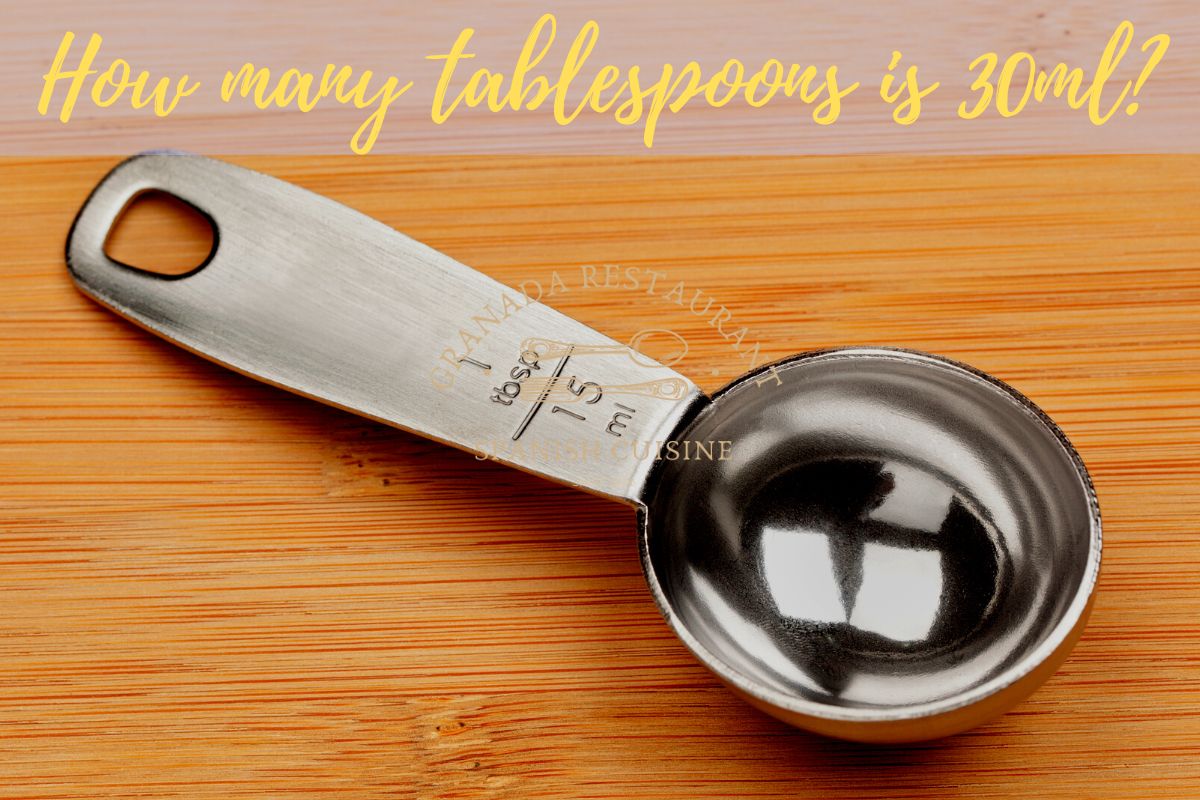Do you ever find yourself in the middle of a recipe, wondering exactly how many tablespoons is 30ml? Don’t worry – we have you covered. In this blog post, we’ll explore the different measurements and conversions so you can feel confident calculating your ingredient quantities accurately every time.
Keep reading to learn everything there is to know about converting between milliliters and tablespoons!
Why Do People Need to Convert Between Tablespoons and Milliliters
People need to convert between tablespoons and milliliters due to several factors, such as differences in measurement systems, recipe requirements, precise dosing in medicine, and ensuring accuracy in culinary and scientific endeavors.
Measurement systems vary globally, with some regions primarily utilizing the imperial system (e.g., the United States) and others the metric system (e.g., Europe, Canada, and Australia). As an imperial unit, a tablespoon equates to roughly 14.8 milliliters in the metric system, leading to occasional confusion and necessitating conversions to ensure accurate and consistent measurements.
|Read: Kitchen Hacks: How to Convert Teaspoons to Cups Like a Pro
In the culinary world, recipes from different countries may include ingredient quantities listed in tablespoons or milliliters. To achieve optimal taste and consistency, home cooks and professional chefs must convert between these units accurately. Failing to do so may result in an incorrect proportion of ingredients, adversely affecting the final product.
Similarly, medicine administration and formulation often require precise dosing, where even slight deviations may significantly affect patient health.
How Many Tablespoons Is 30ml
How much is 30 mL in tablespoons? 30 milliliters (ml) is equivalent to 2 tablespoons (tbsp) in volume measurement.
This conversion is essential when measuring ingredients for cooking or baking since different countries use different units of measurement.
A tablespoon is a unit of volume predominantly used in cooking to measure liquids, and dry and wet ingredients. It is occasionally employed to describe the capacity of serving spoons as well. It is generally larger than a teaspoon and smaller than a ladle.
On the other hand, milliliters are a metric unit of volume commonly used worldwide. One milliliter is equal to one-thousandth of a liter. Milliliters are particularly handy because of their precision and compatibility with other metric units when calculating various quantities.
It is important to note that the actual size of a tablespoon can vary slightly across different regions.
In the United States, one tablespoon is approximately equivalent to 14.79 milliliters.
Meanwhile, in Australia, one tablespoon measures 20 milliliters.
However, the consensus for converting 30 milliliters to tablespoons is predominantly set at 2 tablespoons. This standard is particularly beneficial regarding consistency in recipes and culinary creations.

Other Common Conversions that Cooks and Bakers Should Know
Precise measurements are paramount for cooking and baking success in the culinary world. Creating delicious dishes often requires converting units of measurement, which can be challenging for those unfamiliar with the various conversions.
|Read: Baking Essentials: Converting Half a Cup to Tablespoons
To help you navigate this process, here are some additional common conversions that anyone in the kitchen should be acquainted with:
Volume Conversions:
- Fluid Ounces and Milliliters: One fluid ounce (oz) equals 29.57 milliliters (ml). For example, if a recipe calls for 8 ounces of milk, you need approximately 237 milliliters.
- Quarts and Liters: One quart (qt) equals approximately 0.95 liters (L). Consequently, if a recipe asks for 4 quarts of water, you need nearly 3.8 liters.
- Cups, Pints, and Quarts: Within the United States, the customary system of volume measurements includes cups (c), pints (pt), and quarts (qt). There are 2 cups in a pint, 2 pints in a quart, and thus 4 cups in a quart. Familiarity with these conversions can make it infinitely easier to follow recipes that use various volume measurements.
|Check out: Cooking Confusion: How Many Ounces Are in a Teaspoon
Weight Conversions:
- Ounces and Grams: One ounce (oz) equals 28.35 grams (g). This conversion is vital when measuring dry ingredients such as flour, sugar, and baking soda.
- Pounds and Kilograms: One pound (lb) equals roughly 0.45 kilograms (kg). For instance, if a recipe calls for 5 pounds of potatoes, you need about 2.27 kilograms.
Temperature Conversions: Fahrenheit and Celsius
Cookbooks and recipes often list oven temperatures in Fahrenheit (°F) or Celsius (°C), necessitating temperature conversion.
To convert Celsius to Fahrenheit, use the formula (°C × 9/5) + 32 = °F; to convert Fahrenheit to Celsius, use the formula (°F – 32) × 5/9 = °C. For example, if a recipe requires baking at 350°F, you would set your oven to approximately 177°C.
Baking-specific conversions
- Teaspoons and Tablespoons: Baking often entails smaller measurements, which utilize teaspoons (tsp) and tablespoons (tbsp). One tablespoon is equivalent to three teaspoons; thus, it’s crucial to be mindful of this conversion when measuring baking essentials like baking powder, salt, and spices.
- Eggs: When a recipe refers to using a particular size egg, it’s essential to know the weight equivalent. For example, one large egg equals approximately 50 grams, whereas a medium-sized egg weighs roughly 44 grams.
Understanding these common conversions ensures precision and accuracy while cooking and baking. They are excellent tools for any home cook or professional chef, allowing delicious creations to be brought to life easily and confidently. By familiarizing yourself with these conversions, you will be well-equipped to tackle any recipe, regardless of the units of measurement used.
Tips for Measuring Using Tablespoons Correctly
Measuring ingredients using tablespoons is simple, but it’s important to do it accurately and correctly.
- To measure using tablespoons, start by obtaining the right measuring spoon.
- A tablespoon typically holds around 15 milliliters of liquid or 3 teaspoons.
- Fill the spoon to the top and level off the top with a flat edge, such as a knife blade or spatula.
- If you’re measuring dry ingredients such as sugar, flour, or spices, lightly spoon them into the tablespoon until overflowing, then sweep away the excess.
- When measuring small amounts of ingredients such as baking soda, cornstarch, or yeast, use a ¼ teaspoon measure for accuracy and avoid over-measuring.
- Finally, if your recipe calls for half of a tablespoon, use one and one-half teaspoons of measurements instead.
By following these steps, you can ensure that your recipe results in perfectly measured ingredients every time.
How Many Tablespoons Are There in 20 Ml?
If we use 1 tablespoon is equal to 14.79 mL, we can calculate the number of tablespoons in 20 mL. To do this, we will divide the given milliliter value (20 mL) by the conversion factor:
20 mL / 14.79 mL per tablespoon ≈ 1.353 tablespoons
Therefore, there are approximately 1.353 tablespoons in 20 mL.
If we were to use the rounded conversion factor of 15 mL per tablespoon instead, the calculation would be:
20 mL / 15 mL per tablespoon ≈ 1.33 tablespoons
In this case, there would be approximately 1.33 tablespoons in 20 mL.
Frequent Asked Questions
Does 30 ml equal 2 tablespoons?
Yes, 30 ml is equal to 2 tablespoons.
How do you convert ml to tablespoons?
To convert ml to tablespoons, divide the number of ml by 15. For example, 45 ml equals 3 tablespoons (45 ÷ 15 = 3).
How can I measure 30 ml with a spoon?
To measure 30 ml with a spoon, use a measuring spoon specifically designed for ml or use a tablespoon and measure 2 tablespoons.
How many milliliters are in a tablespoon?
There are approximately 15 milliliters in 1 tablespoon.
How many tablespoons are equal to 30 ml of liquid?
One tablespoon equals 15 ml of liquid, so 30 ml of liquid equals 2 tablespoons.
Are 2 teaspoons equal to 30 ml?
No, two teaspoons are equal to 10 ml.
What is the conversion rate for tablespoons to ml?
One tablespoon is equal to 15 ml of liquid.
What is the conversion rate for ml to tablespoons?
One tablespoon equals 15 ml of liquid, so to convert ml to tablespoons, you can divide the ml by 15. For example, 30 ml equals 2 tablespoons (30/15=2).
How many teaspoons is 30 ml of Nyquil?
30 ml of Nyquil is equivalent to 6 US teaspoons (assuming a teaspoon is 5 ml).
How do you convert tablespoons to milliliters?
To convert tablespoons to milliliters, you can use 1 tablespoon = 15 ml conversion factor. Therefore, to convert a certain amount of tablespoons to milliliters, you would multiply the number of tablespoons by 15. For example, 2 tablespoons would equal 30 ml (2 tablespoons x 15 ml/tablespoon = 30 ml).
—
Converting between tablespoons and milliliters may seem daunting, but with the tips in this post, it’s easier than ever.
Remember, a tablespoon is always 15ml, so 30ml is two tablespoons. Once you understand that concept, conversions become much simpler.
When measuring ingredients with a tablespoon for recipes, fill it up above the rim and scrape off the excess with a flat surface or knife. This ensures accuracy and precision to make your baked goods come out perfect every time! More about soapstone oven at Specksteinöfen!
For whatever reason, you need tablespoons to milliliters conversions; trust that with practice comes perfection, so get out there and try it.
Further Reading:
- Guidance for Industry: Guidelines for Determining Metric…- FDA
- Measurement Conversion Tables – USDA
- How to Measure a Tablespoon – wikihow
- How to Use Measuring Spoons and Cups – wikihow

I am Benjamin Nunez, and I love Spanish food, Italian food, and seafood. I have worked in kitchens all my life. I started as a dishwasher when I was just a teenager, and worked my way up to being a head chef.
I specialize in Spanish cuisine, but I can make any kind of Italian or seafood dish you want. My kitchen is always open! Website: https://granadarestaurant.com/

